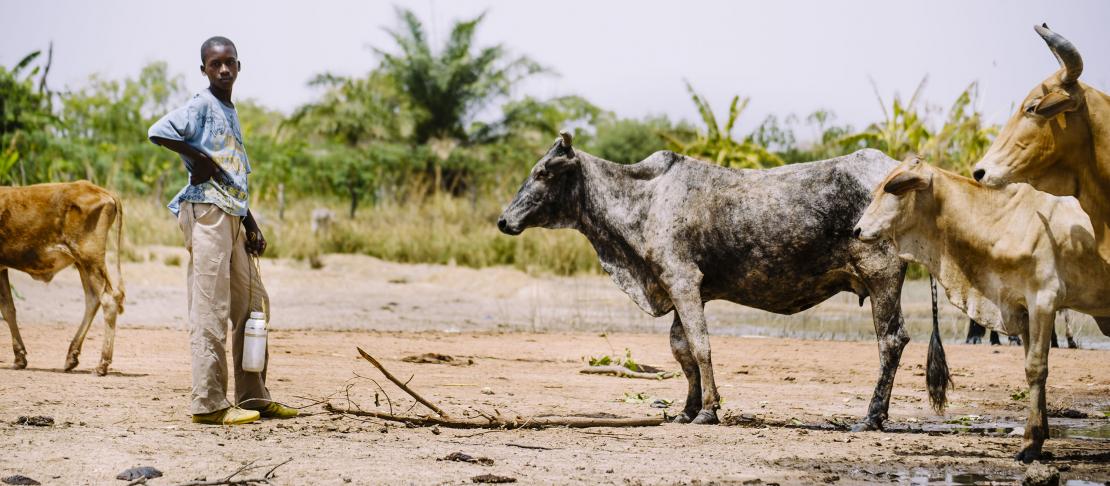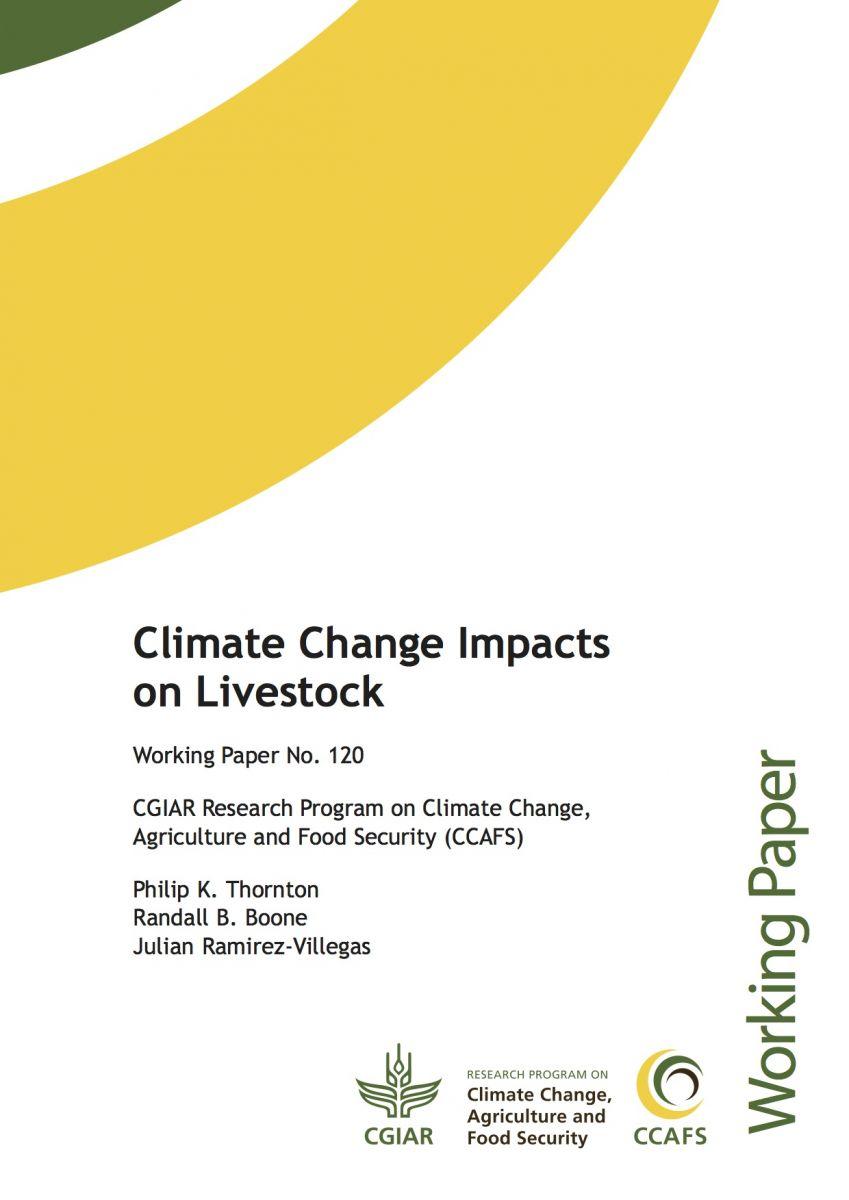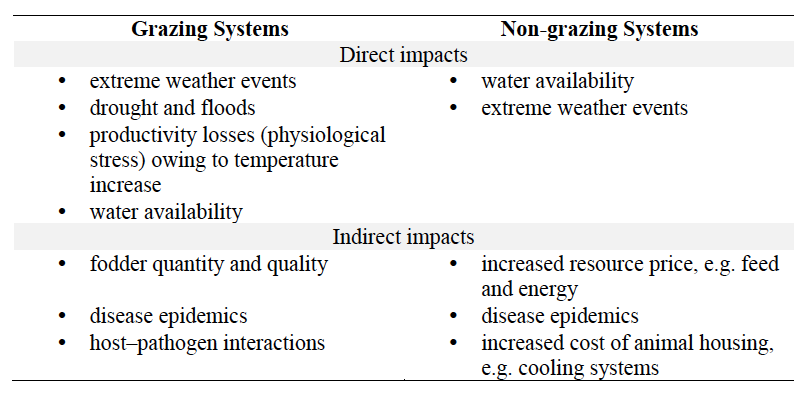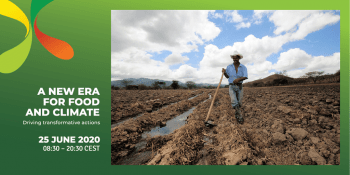Climate change impacts on livestock: what do we know?

New paper summarizes what we know about climate change impacts on livestock systems in Africa.
Back in 2009 CCAFS Flagship Leader Philip Thornton led a review on what was then known about the impacts of climate change on livestock systems in developing countries.
The comprehensive review signalled a long road ahead, as the scientific community had produced fairly little that could tell how climate change and livestock would interplay and impact each other.
Now, almost six years down the road, has the situation changed in any way?
To learn  more, the CGIAR Research Program on Climate Change, Agriculture and Food Security (CCAFS) has produced a Working Paper summarizing recent scientific findings on the topic (PDF).
more, the CGIAR Research Program on Climate Change, Agriculture and Food Security (CCAFS) has produced a Working Paper summarizing recent scientific findings on the topic (PDF).
The working paper study, led by Philip Thornton, covers primarily livestock and climate impacts for Africa, but many findings, especially adaptation measures, can be applied globally.
Authors conclude that the 2014 IPCC assessment contains only limited information on the projected impacts of climate change on livestock and livestock systems, compared with crops – a reflection on the relative amount of work that has been done. Thus, although progress on the topic has been made, it is clear that it is still in need of further collective scientific action.
With livestock systems already engaging 600 million farmers around the globe, and the livestock sector continuing to develop as demand for meat increases, more robust and detailed information is urgently needed. This to better understand the trade-offs between various livestock adaptation options so that farmers and policy makers can make informed decisions around climate adaptation and resilience building.
What we know about livestock and climate change
The negative effects of increased temperature on feed intake, reproduction and performance on various livestock species is something that is reasonably well understood. For example, for most livestock species, such as cattle, sheep, goats, pig and chickens, temperatures between 10 and 30°C is when they perform the best. But for each 1°C increase above that, all species reduce their feed intake by 3-5 percent. Without a doubt, this will have far reaching effects on the quality and quantity of livestock species.
The G-Rangeland Tool:
The G-Range tool can be used for global and regional studies of climate change impacts on rangelands. The tool was developed by University of Colorado, US, and simulates the growth of herbs, shrubs, and trees, and the change in the proportions of these plant types through time, as well as tracks changes in carbon and nitrogen in the soil and plant parts.
Learn more: New tool simulates how climate change will affect rangelands
Increase in temperatures will also spell widespread negative impacts on forage quality and as a consequence, livestock productivity. The results from new simulations of the impacts of climate change on Africa’s rangelands, using something called the ‘G-range tool’, clearly indicate that very substantial changes in livestock feed resources will occur, and these changes will be detrimental.
Many regions in Africa will see decreases in the quantity and quality of crop residues as well, further adding pressure on farmers and ivestock feeding resources.
Direct and indirect impacts of climate change on livestock systems (Table from the working paper):

Adapting livestock systems
There are many options that can help livestock keepers adapt. The working paper illustrates trade-offs between various climate adaptation options that livestock farmers can take on. Options include changes in livestock breeds and species, improved feeding better grazing and manure management, and use of weather information and weather-index insurance.
Many livestock adaptation changes will also involve transformation of farmers’ livelihoods. Recent examples of such transitions include the adoption of camels and goats in addition to, or as a replacement for, cattle in drylands as a result of changing drought frequency and declining feed availability.
Although a number of adaptation options are available, and proven successful, there appears to be no option that are widely applicable which do not have constraints and trade-offs. In addition, little evaluation of the long-term sustainability of these transformations and their potential impacts on food security and livelihoods exist.
Learn more: Searching for the best climate adaptation options for mixed crop and livestock farmers

All current adaptation measures for livestock systems have trade-offs. More climate resilient solutions for cattle, goats and chickens are urgently needed. Photo: C. Schubert (CCAFS)
As discussed, unlike for cropping systems, there is currently only limited evidence for recent impacts on livestock systems. There is also much less certainty around the aggregated impacts of climate change on livestock systems with and without adaptation, as well as limited understanding of what increases in rainfall variability will mean for livestock species.
An enabling policy and technical environment could support farmers to adapt to climate change and enhance their livelihoods and food security.
There has been some progress since 2009, but we need much more work to ensure that we will have the knowledge and political support needed to build resilient livestock systems in the future. A key question revolves around how we can create the political will to bolster the resources going into livestock research for development.
The paper is a resource for policy-makers, climate negotiators and others seeking further scientific input to the annual climate negotiations in Bonn, Germany held this June.
The paper, entitled “Climate Change Impacts on Livestock”, was co-authored by livestock researcher Philip Thornton, also based with the International Livestock Research Center (ILRI), Randall B. Boone from University of Colorado and Julien Ramirez-Villegas from the International Center for Tropical Agriculture (CIAT).
Download the Working Paper: Thornton PK, Boone RB, Ramirez-Villegas J. 2015. Climate change impacts on livestock (PDF). CCAFS Working Paper No. 120.
Additional reading:
- New briefs highlight critical agriculture issues for UN climate talks
- Searching for the best climate adaptation options for mixed crop and livestock farmers
- What are the long-term effects from flash floods and heat waves on agriculture?
- Maps and graphs: Livestock and Mixed Crop-Livestock Systems
Cecilia Schubert works as Communication Officer for CCAFS Flagship 4 Policies and Institutions for Climate-Resilient Food Systems.



